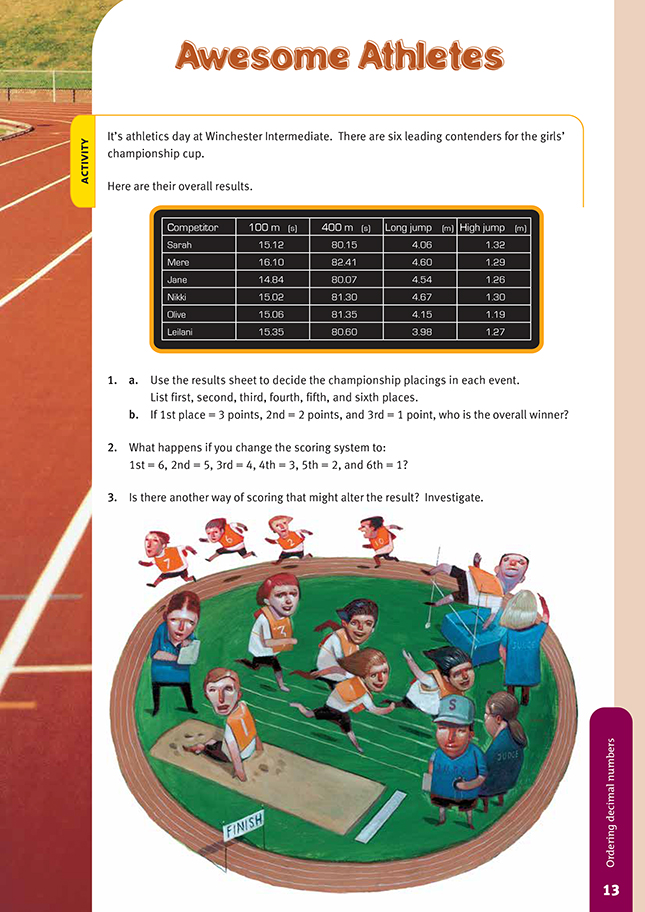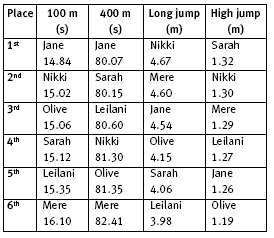This is a level 4 number link activity from the Figure It Out series. It relates to Stage 7 of the Number Framework.
A PDF of the student activity is included.
Click on the image to enlarge it. Click again to close. Download PDF (196 KB)
order decimals to 2 decimal places
FIO, Link, Number, Book Three, Awesome Athletics, page 13
The context for this activity is likely to be familiar for students, although a brief discussion would be useful to make sure the students realise that the fastest time (that is, the lowest number) is the winner for the running events and the highest or longest jump is the winner for the jumping events. The following questions could be used for this:
“Who wins in running events: fastest time or slowest time?”
“Who wins in a jumping event: shortest or longest distance?”
“Which is faster: 15.12 second or 15.21 seconds? Why?”
Alternatively, you could begin by putting forward the following scenario:
“Luke suggests that the best way to work out who is the champion is to add up the times and distances of each event for each competitor, and the one with the most points wins. Luke would get 104.4 points (16.1 + 82.41 + 4.6 + 1.29 = 104.4). Is this a good way to work out the winner? Why or why not?”
The students could experiment with several different scoring systems to answer question 3. As an extension, they could investigate scoring systems in athletics and sports such as rugby and cricket and discuss whether they think the systems are fair.
Answers to Activity
1a.
b. Jane and Nikki are first equal (7 points each).
2. Nikki would be the champion. The results would look like this:
.gif)
3. Answers will vary. Two suggestions are:
• 1st = 10, 2nd = 6, 3rd = 4, 4th = 3, 5th = 2, 6th = 1
(This would mean Jane had 26 points and Nikki 25.)
• Points are awarded only to the first four places:
1st = 10, 2nd = 6, 3rd = 4, 4th = 3. (In this case, Nikki would have 25 and Jane 24.)

